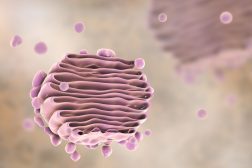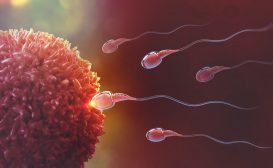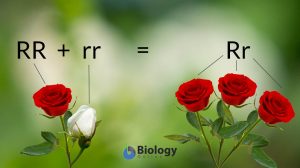Definition
noun, plural: proerythroblasts
A progenitor cell that arises from the CFU-e, and then develops to become an erythroblast (or normoblast)
Supplement
In vertebrates, including humans, blood is the fluid that circulates in the body to deliver nutrients and oxygen. It is comprised of the plasma and the cellular elements. The cellular elements are the blood cells and the platelets, which are all derived from multipotent stem cells. A hemocytoblast is a multipotent hematopoietic stem cell that gives rise to both lymphoid and myeloid stem cells. The myeloid stem cells are progenitor cells that give rise to erythrocytes, granulocytes, monocytes, and megakaryocytes. The process by which a progenitor cell differentiates into an erythrocyte is referred to as erythropoiesis. A proerythroblast is a cell in the earliest stages of erythropoiesis. It is the precursor cell for erythroblast (or normoblast).
Proerythroblast is sometimes used synonymously with pronormoblast. However, a stricter definition of a proerythroblast would be one that includes both pronormoblast and promegalobast. A pronormoblast is a form of proerythroblast that would undergo normal development whereas a promegaloblast is a form of proerythroblast that undergoes an abnormal development. Thus, a proerythroblast would be an inclusive term for both pronormoblast and promegaloblast.
Proerythroblast is derived from a CFU-e. It becomes a cell that is committed to become an erythrocyte via erythropoiesis. To become one, it develops into an erythroblast (or normoblast), which then develops into a reticulocyte, and then finally into an erythrocyte.
Synonym(s):
- pronormoblast
- rubriblast
See also:







